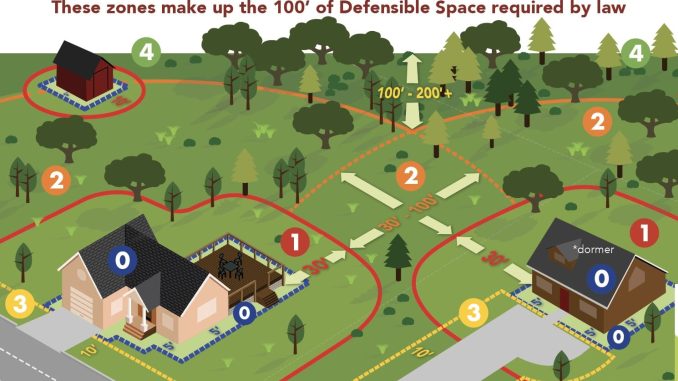
The updated Fire Hazard Severity Zone maps and recent wildfires have prompted many property owners and residents to learn more about how to prevent and prepare for fire at homes, in neighborhoods, in communities. Please note that in the City of San Diego, owners of properties which are within a Very High Fire Hazard Severity Zone and subject to local ordinances and regulations, are responsible for creating defensible space up to 100 feet around the home or to the property line, whichever comes first.
- Increase your home’s resilience by following the home hardening guidelines of the Office of the State Fire Marshal; with options for new building materials and affordable retrofitting options that enhance your home’s defense against wildfires: https://readyforwildfire.org/wp-content/uploads/2024/05/Low-Cost-Retrofit-List-Updated-5_1_2024.pdf
- Review the updated Fire Hazard Severity Zone maps for San Diego: https://www.sandiego.gov/fire/fireprev/firezonemap
- For more information from the State Fire Marshal, visit: osfm.fire.ca.gov
- For more information from the Fire Safe Council of San Diego County, visit: https://firesafesdcounty.org/resources/preparing-for-wildfire/
Low-Cost Ways to Harden Your Home to Make It More Resistant to Wildfire
- When it is time to replace your roof, replace it with a Class A fire-rated roof.
- Block any spaces between your roof covering and sheathing with noncombustible materials.
- Install a noncombustible gutter cover on gutters to prevent the accumulation of leaves and debris in the gutter.
- Cover your chimney and stovepipe outlets with a noncombustible corrosion-resistant metal mesh screen (spark arrestor), with 3/8-inch to 1/2-inch openings.
- Install ember and flame-resistant vents. Consult your local building official and hire a licensed contractor for this project as these modifications may reduce airflow.
- Caulk and plug gaps greater than 1/8-inch around exposed rafters and blocking to prevent ember intrusion into the attic or other enclosed spaces.
- Inspect exterior siding for dry rot, gaps, cracks, and warping. Caulk or plug gaps greater than 1/8-inch in siding and replace any damaged boards, including those with dry rot.
- Install weather-stripping to gaps greater than 1/8-inch between garage doors and door frames to prevent ember intrusion. The weather-stripping must be compliant with UL Standard 10C.
- When it’s time to replace your windows, replace them with multi-paned windows that have at least one pane of tempered glass.
- When it’s time to replace your siding or deck, use compliant noncombustible, ignition-resistant, or other OSFM Wildland Urban Interface (WUI) Products.
- Cover openings to operable skylights with a noncombustible metal mesh screen with openings in the screen not to exceed 1/8 inch.
- Install a minimum 6-inch metal flashing, applied vertically on the exterior of the wall at the deck-to-wall intersection to protect the combustible siding material.
Low-Cost Ways to Create Defensible Space and Enhance the Effects of a Hardened Home
- Regularly clean your roof, gutters, decks, and the base of walls to avoid the accumulation of fallen leaves, needles, and other flammable materials.
- Ensure that all combustible materials are removed from underneath, on top of, or within five feet (Zone 0) of a deck.
- Remove vegetation or other combustible materials that are within five feet (Zone 0) of windows and glass doors.
- Replace wood mulch products within five feet (Zone 0) of all structures with noncombustible products such as dirt, stone, or gravel.
- Remove all dead or dying grass, plants, shrubs, trees, branches, leaves, weeds, and pine needles within 30 feet of all structures or to the property line.
- Ensure exposed firewood is stored at least 30 feet away from structures or completely covered in a fire-resistant material that will not allow embers to penetrate. Additionally, make sure you have 10 feet of clearance around your wood piles.
- Be sure to store combustible outdoor furnishings away from your home when not in use.
- Remember to properly store retractable awnings and umbrellas when not in use so they do not collect leaves and embers.


